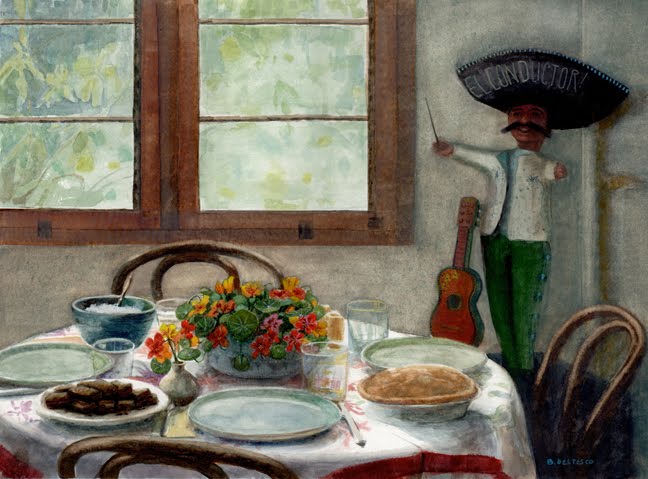
Be an Art Boss
In Santa Barbara, California on Thanksgiving, a few decades ago, I took a photo of our feast. A turkey centerpiece, with a bowl of rice and a platter of green beans. A Mexican paper maché man under a sombrero with the words El Cuatrero (the rustler) scribed across the brim watched over our culinary adventures. You can see a black and white copy of the reference photo taped above my work in progress below, with the aforementioned turkey and green beans. Since I’m the boss of me, a few changes meandering into this watercolor. Mister turkey became a pot of nasturtiums, and dinner became dessert. Apple pie, brownies and whipped cream landed on the table, and the rustler got musical and became a conductor, with a guitar. It feels a little more festive, and who wouldn’t want a reminder to always have dessert, right? Do you alter your reference photos like this too?
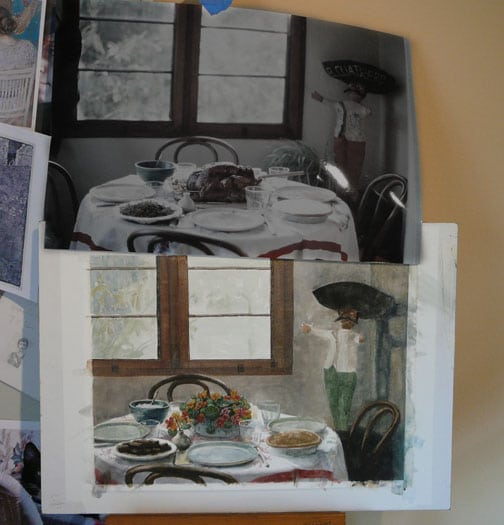
Rule Based Watercolor Painting
When we begin something new – especially an art media like watercolor – it’s encouraging to have rules. I love instructions; they help me make dinner, or assemble a bookshelf from Ikea, etc. Give me step-by-step notes, and I can (usually) get the job done. So with watercolor, we want the same specifics, right? Beginners want to know which watercolor brush, watercolor paper, brand of pigments, pan vs tube colors, which colors to buy and where to start. That’s totally understandable, and I operate the same way when learning something new. But understand this about painting: every instructor, and each how-to book is going to direct you towards a different art supply list, and an approach contrary to the last instructor you learned from. The good news with that is the fact that there are many ways to paint watercolors. And the best tip from that is your freedom to wing it, experiment, try random things, and PLAY, till you find your own favorite supplies, methods and subjects.
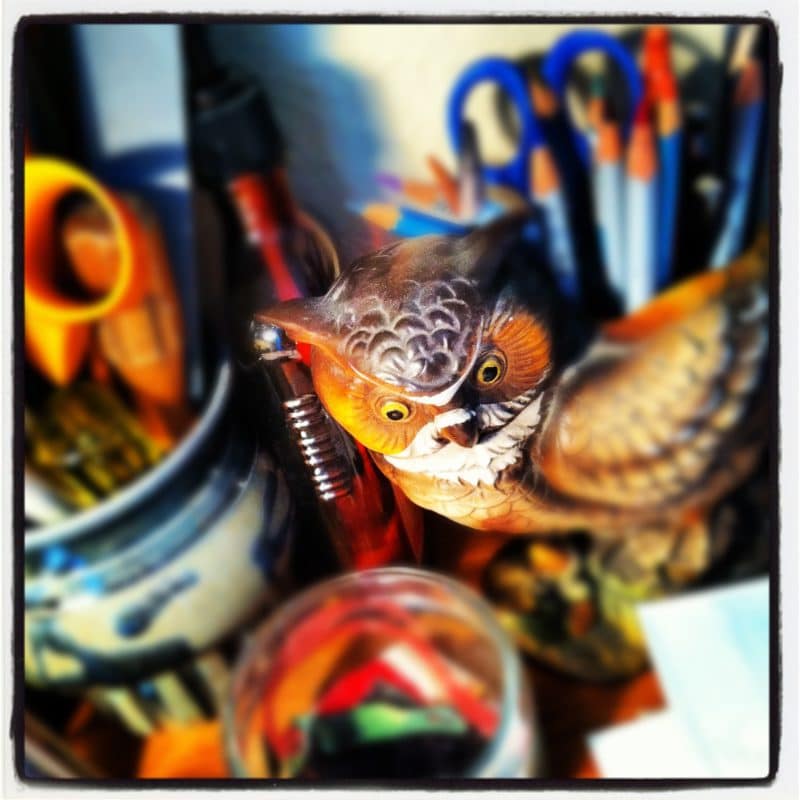
Play with your Watercolors
When was the last time you played with your paints and watercolors? No set idea of what you will paint, no reference photo, no expectations of masterful results. If you’re *brand new* to watercolors, I think play dates with your art supplies are very important, but even mid-level painters harvest Ah-Hah’s from a day in the studio with permission to experiment.
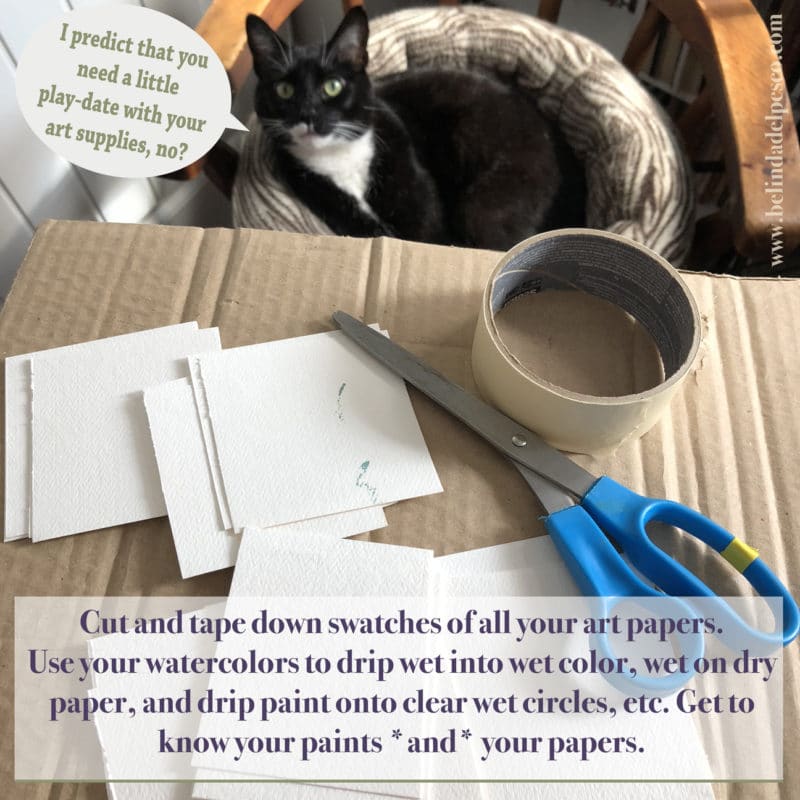
Structured Experiments with Watercolors
If you like a wee bit of structure in your wanderings, try this: make a few watercolor sample boards to “test” all your papers and paints. Cut 4 x 4 inch swatches of every painting and drawing paper you’ve collected, and tape (masking tape is fine) each one to an 11×14 inch board (cardboard will work). If you have a lot of paper, make a few boards. If you have only a few papers, make multiples swatches of each paper so you can test different approaches to painting on them. Label each paper on the masking tape so you can track the brand, weight and surface of each sample. Example Hot press, 140 lb Canson, and Strathmore Sketch 90 lb, etc.
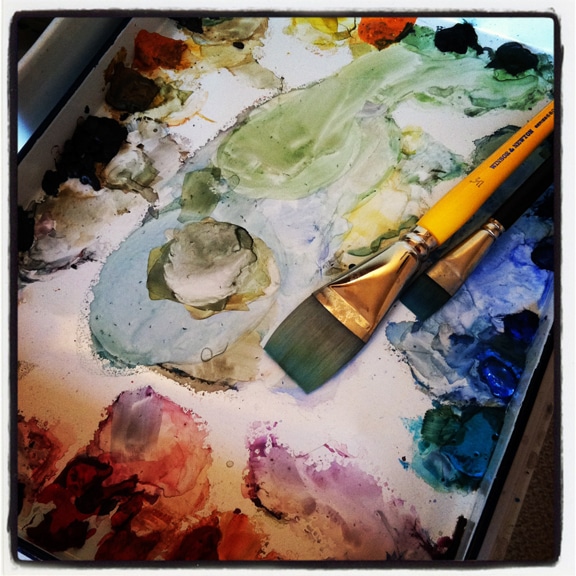
Watercolor Date Night
Pull out your watercolors and brushes, and practice painting swatches of color on your collection of papers to get to know them better.
- Brush a solid circle of wet pigment on a dry paper swatch, and put a drop of another color in the center of the wet circle, and let it bloom without touching it.
- Paint a horizontal stripe of one color across a swatch, and then pick up a new color and paint a vertical stripe across it. Now, drop a small drip of clean water where they intersect, and move the board around to watch how the pigments interact. Set it down and don’t touch it till the pigments dry.
- Paint a veil of clean water on a fresh swatch of paper, and then load your brush with a color and touch one corner of the swatch. Do that again with a different color on each of the three remaining corners, and watch how some pigments travel on the wet paper, and creep across the surface, and others just pool where they were laid.
- Let all your colors on all your papers run into each other without noodling them and making mud. Let them interact without your help (like this).
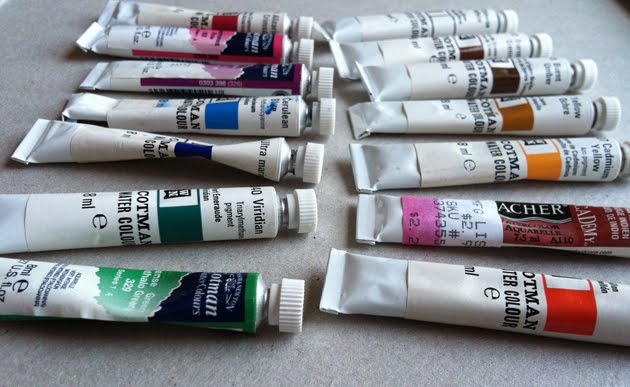
Art Instruction is Great
I’m overwhelmingly grateful to every art instructor I’ve ever taken a workshop with. I’m just as humbled by the artists who’ve inspired my work with tips and tricks shared on blogs and social media. All that verbal and visual instruction fills the coffers of my brain with decades of valuable input. Ultimately, to climb the hill towards more confidence in your watercolor journey, YOU have to paint. Your hands on your art supplies, moving your pigments around is a crucial step towards absorbing all you’ve read and watched and learned, intellectually. All you’ve harvested as knowledge and inspiration has to pour out now, through your hands and pass under your eyes from your own process. You can’t learn to ride a bike by reading about it. Actively painting and drawing is the only way you’ll get better, feel more confident, and find more joy in the process.
Take the Fear Out of Art Making
If you can’t bring yourself to paint something left unfinished, or you don’t know what to start painting, give yourself some time to play with your supplies and get to know them. It’s okay to be a novice. It’s perfectly fine to know nothing about watercolor, brushes and paper. Start slow and small, but regularly, and build your skills with the curiosity of a kid at a table of art supplies. Tap into your sense of wonder at the way those colorful pigments mingle, bloom and travel across the paper. When was the last time to goofed off with art supplies, with no expectation of a final product, other than your experiences? Play with your paints.
Have fun with your experiments, and I’ll see you in the next post,
Belinda
P.S If you are near Ventura, California, come visit next weekend – October 6 & 7 – at Ventura Artwalk. I’ll have about 60 pieces of original watercolors and printmaking on California Street in an 18 x 8 foot POD! #superfancy
P.P.S. If you’d like to subscribe to this blog so each new post lands in your email inbox, sign up here.
P.P.P.S. If you know someone struggling with their acquaintanceship with painting, share this post with them.
Art Quote
You have made tremendous strides in art. Your drawing is strong, your colors are true. You have rid yourself of that limp Flandrinian-Lamothian line work of that gray, leaden color. There is no need to keep tormenting yourself, my dear Edgar; you have set an excellent course. Set your mind at rest, and through calm but steady and unabated work persevere along this path you have chosen. It is yours and nobody else’s. Work in peace, I tell you, stay on track, and rest assured that you will succeed in achieving great things. You have a bright future ahead of you; don’t lose heart, don’t worry yourself so.
~Written to Edgar Degas – from his father Auguste De Gas in the summer of 1858
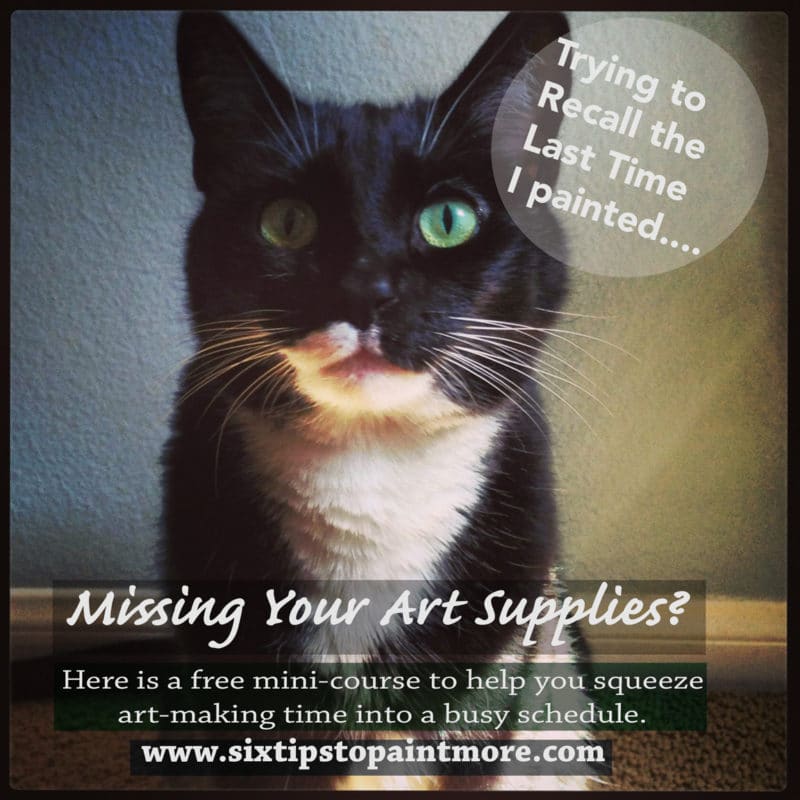

I love that you said the freedom to wing it is important when painting. I have been wanting to learn watercolor techniques for years. This year I am going to start with making gifts of my talents.
Wonderful painting and blog as always. If I can combine playing and working I feel wonderful — the best of both artistic worlds.
XOXOXOXOXO Barbara
Yes, here-here to working and playing in the same sandwich! I’m rooting for you on your New York Show, and I hope everything you’ve exhibited there sells to new collectors! XOXOXOX
Hi Belinda, your painting of a set table is exactly what I have been contemplating as an inviting subject. Yours is lovely!
And yes, I do make changes to my inspiration photo. Sometimes even a good photo lacks a focal point!
I really enjoy getting your blog notices in my email. Thanks so much.
Hi Nancy, Thanks for stopping by and leaving such a nice comment. Here-here to being the bosses of our reference photos with alterations, omissions and movable focal-points! Good wishes to you in your table setting still life. Come back and leave us a link when you get it finished and posted!